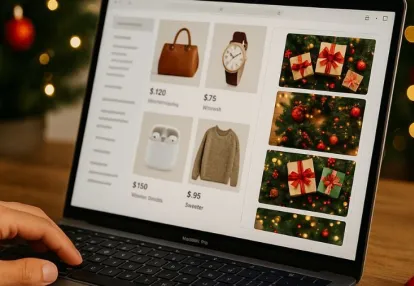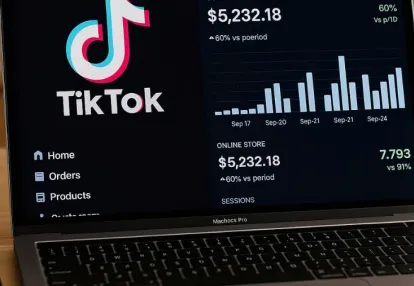
Our tools monitor millions of native, push, pop, and TikTok advertising campaigns.
Get StartedGoogle generates revenue in multiple ways. Apart from private investments and selling shares of its stock, Google uses a variety of ways to partner with advertisers and merchants, the most important of which are Ads, Adsense, Admob, and Ad Manager. Most of the revenue Google generates comes from advertising, and each publisher receives a percentage of the revenue recognized by Google in connection with the display of ads on their site. This is referred to as revenue share.
With Google Ads, advertisers submit ads to Google containing a list of keywords on a business, product, or service, so that when a user searches the web through Google using any of those keywords, at least one appears at the top of the search results. Every time a user clicks on the ad and is directed to the site of the advertiser, Google gets paid, and search partners get a revenue share.
Google Adsense works similarly, except it allows for the integration of ads onto a site instead of displaying ads on Google SERP. Google's spiders move around the site and analyze the content, and then Google selects ads that contain keywords similar to the site. Every time a user clicks on an ad found on the website; the site receives a portion of the ad revenue while Google gets the rest.
AdMob serves as a way to monetize mobile apps, following the same concept of ad integration as in AdSense.
AdMob serves as a way to monetize mobile apps, following the same concept of ad integration as in AdSense.
Google Ad Manager is a complete ad exchange platform that supports buying and selling of ads across several ad networks and locations, including AdSense and AdExchange. It is a great management platform for large publishers that have significant direct sales and also serves as an excellent way to monetize all inventory types (websites, mobile apps, videos, or games).
Thousands of news publishers around the globe make use of Google Ad Manager to run digital advertising on their apps and websites. This is because Google's ad management platform tops the rank in performance, controls, and the ability to integrate with several third-party advertising technologies, helping them earn the most revenue for their ad space.
A recent analysis showed that, on average, news publishers keep more than ninety-five percent of the advertising revenue they generate.
Thousands of companies across the ad tech industry work together to show digital ads on the web. The flow of ads from buyers to sellers every day occurs in a competitive marketplace, with thousands of companies providing display advertising services. Many companies in the display advertising business keep an estimate of up to half of the revenue generated from ad flows.
Google, however, lets publishers receive a more significant percentage of the income. Marketers can buy display ads on Ad Manager using Google Ads or Display & Video 360, and publishers get a bigger portion of the revenue generated.
When publishers use Google's Ad management platform to sell directly to advertisers, they keep even more. Below is an overview of how Google shares revenue with publishers using Ad Manager, from Google Ads and Display & Video 360, which are two of the most common ways advertisers buy ads.
ADS PURCHASED WITH GOOGLE ADS
Google Ads makes the process of buying digital advertising easy and super effective. Millions of advertisers, including small upcoming businesses, use Google Ads to buy search ads and ads that show up on Youtube and non-Google websites and apps. Google only gets paid when a user takes action after seeing their ad, which may be in the form of a click, purchase, or filling a form.
Although Google only gets paid when users take action, they still pay publishers for their ad space sold on Ad Manager. This is made possible by a technology that evaluates every impression and coverts the advertisers' business objectives to cost-per-mile (CPM) bids in advertising auctions to buy publisher ad inventory.
Google Ads helps advertisers buy ads more efficiently in ways that suit their businesses by taking the chance of showing ads to users, paying based on either by thousand impressions or for every click.
Since Google Ads doesn't charge advertisers for most impressions, it doesn't have a fixed per-impression fee. So, depending on the advertisers' defined objectives, the types of display ads they decide to run, and how users respond to them, Google's share of revenue varies over time.
Nevertheless, publishers often get a higher percentage of income. In the year 2019, publishers using Ad Manager were entitled to over sixty-nine percent of the total amount paid by advertisers who used Google Ads to buy their display inventory.
ADS PURCHASED WITH DISPLAY AND VIDEO 360
In addition to selling search, website, and in-app ads, Google also works with large brands and their agencies to assist in executing sophisticated display advertising campaigns and strategies. Advertisers who require advanced services, often use the Display & Video 360 version of Google Ad Manager to reach consumers around the world.
READ: What is the difference between native and display advertising?
Most of the advertisers who choose to use this version buy digital ads in various formats, and on many different properties including websites and apps that make use of Ad Manager. These advertisers can purchase ads on over eighty publisher platforms including Index Exchange, MoPub, Comcast, Rubicon Project, AT&T, and others.
Google offers a standard rate of fifteen percent for advertisers using Display & Video 360 display ads. They also let Ad Manager publishers keep over sixty-nine percent of the revenue generated when advertisers buy inventory using Display & Video 360 from these publishers.
Ads for search and AdSense for content are two of Google's most important products.
In 2010, Google made known the revenue share of these products to the public after much curiosity. Marketers have come to understand that a significant percentage of the revenue generated from display advertising purchases goes to them.
While Google Adsense for content allows publishers to generate revenue from ads placed alongside web content, Google Ads allows publishers to place a custom Google search engine on their site and generate income from the ads shown next to search results. Both products offer different services, and so the revenue share with publishers varies for each of them.
Google shares sixty-eight percent of the revenue generated from advertisers for Adsense content ads that appear on publishers' websites worldwide. This revenue share has been constant since 2003 when Google launched Adsense.
Google claims that most of the portion they keep goes into the development of technologies, products, and features to maximize the earnings of publishers.
Google pays its Ad for search partners fifty-one percent revenue share for the ads that show upthrough their implementation, worldwide. This revenue share has been constant since 2005 when it was increased.
Just like with Adsense for content, the percentage of revenue Google keeps goes into research and development for building and enhancing their core search and AdWords technologies.
The percentages for both products are consistent irrespective of the geographic location of the publisher and are not averaged across publishers. It is important to note that these percentages revealed by Google applies to self-serve publishers, that is those who sign up through the Google web site.
Major publishers that work directly with Google get a negotiated revenue share. Other monetizing products like AdMob, AdSense for feeds, and AdSense for games, have undisclosed revenue shares. This because they are quickly evolving, and the costs associated with supporting them haven't been defined. The revenue share for these other products vary as the costs in building and maintaining them also differ significantly. There is also no guarantee that the revenue share of Ad and Adsense will forever remain constant as costs may change dramatically.

Google revealed its revenue share to provide clarity on how the display business works with them, and it is easy to say that Google's revenue share is quite competitive.
Publishers are advised to give more attention to the total revenue generated from their site as revenue shares can be a bit misleading. For example, an ad network other than Google may offer an eighty percent revenue share, but collect only fifty dollars from advertisers, leaving a publisher with forty dollars as income. While with Google, if an ad inventory generates a hundred dollars, the publisher can receive sixty-eight dollars through AdSense at a revenue share of sixty-eight percent. In a case like this, the higher percentage of revenue offered by the other company would not make up for the lower revenue yield.
Google's system ensures that publishers earn the most for every ad impression they receive, with the vast number of advertisers competing to appear on Google ad integrated platforms. Therefore, Google still fares as the best among the rest in the industry.
Receive top converting landing pages in your inbox every week from us.
Quick Read
Coordinating ads across multiple channels can significantly amplify your marketing ROI. Learn how to create a unified strategy that aligns messaging, timing, and targeting across platforms like Native, Push, and Pop. Discover how seamless cross-channel integration enhances brand recall and drives more conversions. Ideal for marketers aiming to make every ad dollar count through smarter coordination.
Marcus Chen
7 minDec 7, 2025
Case Study
TikTok has emerged as a powerful advertising platform for e-commerce businesses looking to drive sales and grow their customer base. This case study from Peru demonstrates the immense potential TikTok holds for e-commerce businesses.
Kulwant Nagi
7 minJul 14, 2024
Featured
TikTok is a key growth channel for Shopify in 2024. Start by adding the TikTok sales channel in Shopify, linking TikTok For Business, Business Center, and Ads Manager, and installing the TikTok Pixel with your chosen data sharing level. In Ads Manager, build campaigns → ad groups → ads, pick Product Sales (with a linked catalog), target by demographics/interests/behavior, and set a daily or total budget (often $20–$50 minimum). Test optimization goals—Clicks, Landing Page Views, and Conversions—to see what scales. Use short video creatives, Spark Ads, creator content via post codes, clear CTAs, and relevant keywords/hashtags. After approval, track analytics and iterate. For strategy, use Anstrex In-Stream to research competitors by filters, keywords, products, and stores, then model high-performing, demo-style, localized ads.
Jairene Cruz
7 minApr 25, 2024





